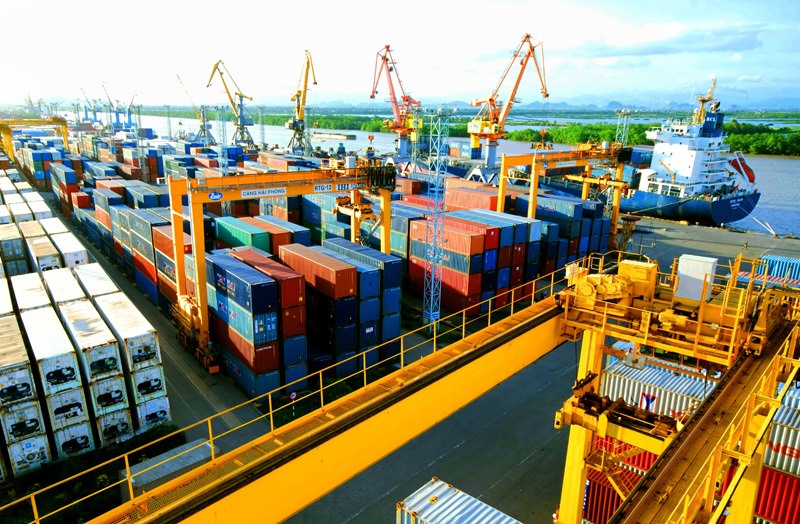 Economy
Economy

Hải Phòng needs more than VNĐ3.5 trillion (US$147 million) to invest in developing logistics services in the northern port city over the next two years.
 |
| A view of Hải Phòng Port. Hải Phòng would need more than VNĐ3.5 trillion (US$147 million) to invest in developing logistics services in the next two years. - haiphongport.com.vn |
HÀ NỘI — Hải Phòng needs more than VNĐ3.5 trillion (US$147 million) to invest in developing logistics services in the northern port city over the next two years.
According to the logistics services system development planning to 2025 recently passed by the municipal People’s Committee, the city plans to attract private investment in developing logistics services, including from foreign investors, adding that incentive policies would be offered to create favourable conditions for investors.
Of the sum needed for the 2018-20 period, only 15 per cent would come from the State budget, which would be spent in land clearance, providing training and developing human resources. The rest was expected to be raised from the private sector.
The sum for the 2021-25 period was VNĐ9 trillion and another VNĐ4.55 trillion was needed for the 2026-30 period. Funding from the State budget will account for 18 per cent and 20 per cent of these figures, respectively.
The city encouraged investment in logistics infrastructure, transportation and the application of technology in facilitating logistics.
Hải Phòng plans to build a modern logistics system to make the northern port city a national logistics hub with international-level competitiveness.
The city targets to reach a logistics services growth rate of around 25-30 per cent per year and the logistics industry would contribute up to 20 per cent of the city’s gross regional domestic product (GRDP) by 2020.
By 2030, the logistics industry was expected to grow at around 30-35 per cent per year and contribute up to 30 per cent of the city’s GRDP.
The percentage of outsourcing logistics services was set to increase from 40 per cent in 2020 to 65 per cent in 2030.
Focus would be placed on developing third-party logistics services first (outsourcing the organisation of logistics to third parties), then gradually develop a fourth-party logistics model (outsourcing the organisation and management of logistics) then fifth-party logistics model (focusing on utilising the most appropriate technologies).
The city would build three major cargo transportation corridors, including Hải Phòng – Hà Nội, Hải Phòng – Hạ Long – Móng Cái and Hải Phòng – Thái Bình – Nam Định – Ninh Bình.
Six logistics centres will be built by 2025 with a total capacity of handling 90.65 million tones of cargo per year which would increase to 104.35 million tones cargo by 2030, including Lạc Huyện, VSIP, Tràng Duệ, Nam Đình Vũ, Tiên Lãng and one at Cát Bi Airport.
Diversifying logistics services was critical to promoting the development of the logistics industry in the northern port city, the local authorities said, adding that the city would focus on developing services which were directly connected with the port and airport system.
Hải Phòng added that enhancing international cooperation was also important to the development of logistics services.
According to Chairman of Hải Phòng People’s Committee Nguyễn Văn Tùng, Hải Phòng was the gateway of the northern region’s seaway which handled the largest volume of cargo in the northern region. It ranked second by cargo volume passing through Việt Nam.
In 2018, Hải Phòng’s port system handled more than 24 million tones of cargo.
Selective in FDI
Hải Phòng would be selective in attracting foreign direct investment (FDI) with a focus on promoting high-tech application, enhancing efficiency of resources and protecting the environment, Tùng said.
The city targeted to attract investments in high technology, part-supplying industry, renewable energy, infrastructure development and agriculture projects.
Energy-consuming and polluting projects would not be welcomed, the city stressed.
Statistics showed that the city so far attracted 629 FDI projects with a total registered capital of US$17 billion. — VNS




